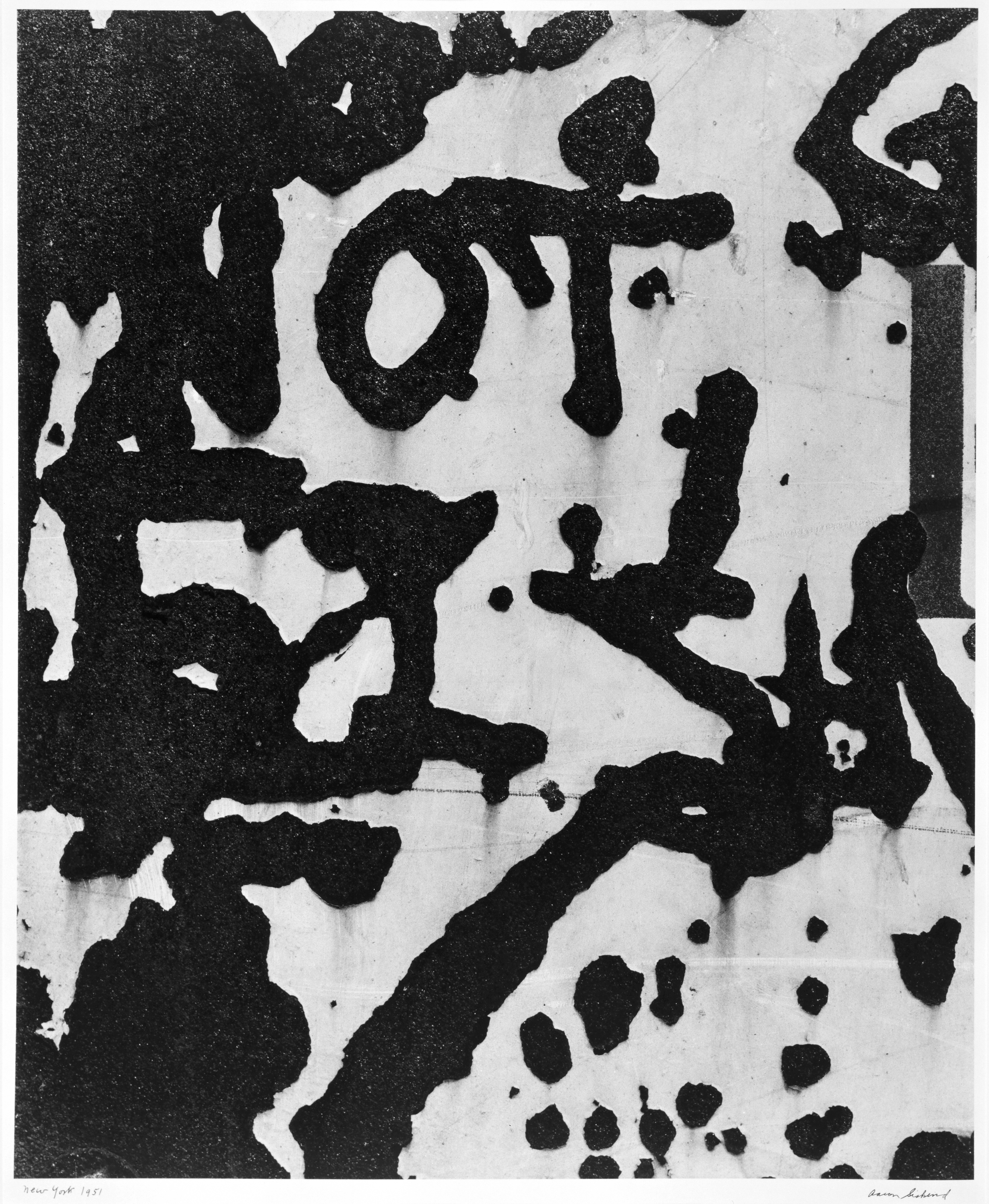Aaron Siskind
(New York, New York, 1903 - 1991, Providence, Rhode Island)
New York, 1951
1951 (printed mid-late 1960s)
Gelatin silver print
21 1/2 x 17 7/8 in. (54.6 x 45.5 cm)
Collection of the Akron Art Museum
Museum Acquisition Fund
1994.9
More Information
In the 1950s, Siskind was one of the most important American photographers to explore abstraction. This close-up photograph of a rusted metal sign shows that even recognizable images from the real world can appear to be abstractions because of the artist's point of view. Siskind's work recalls the well-known abstract expressionist painters of the period.
Keywords
Black and WhitePhotography
Modern Art
Industrial
Abstraction

